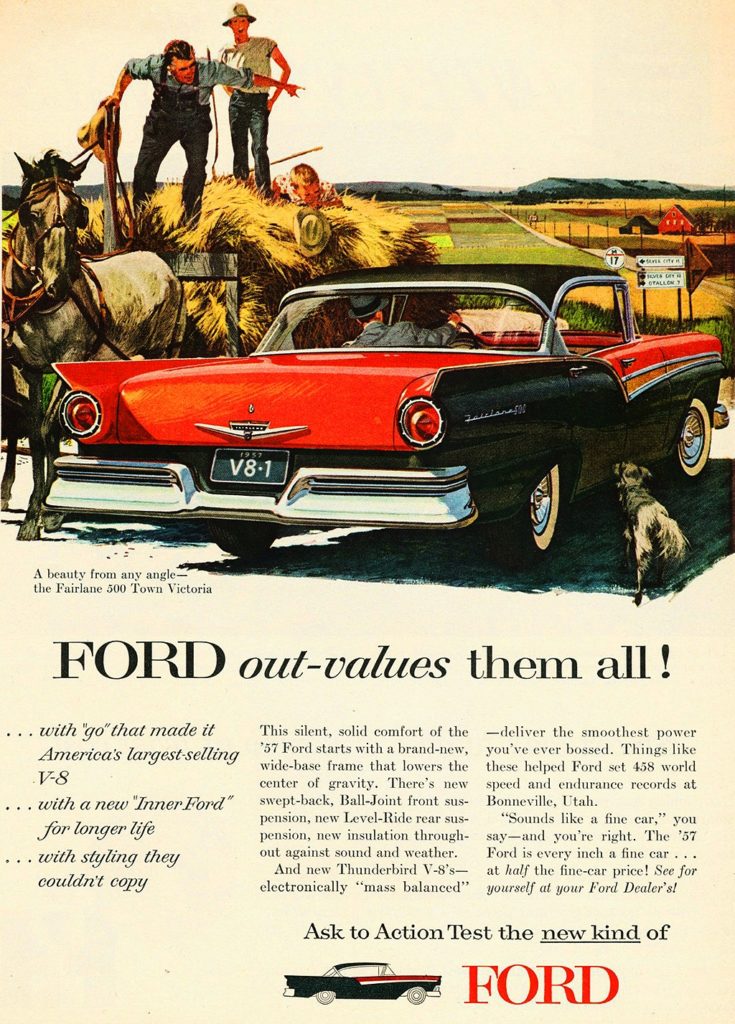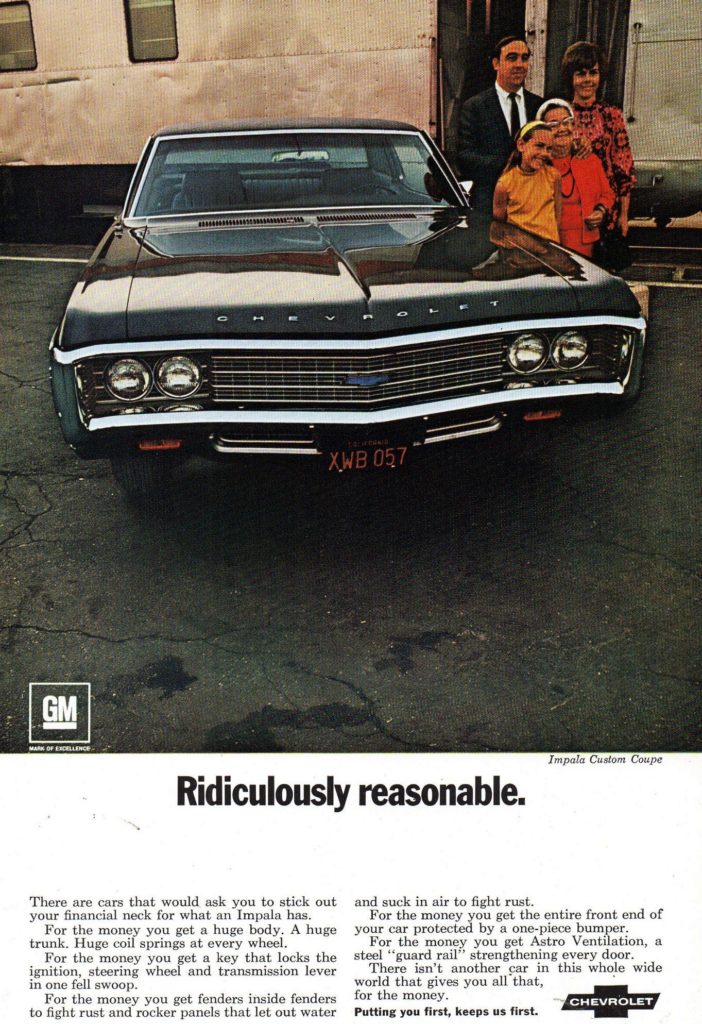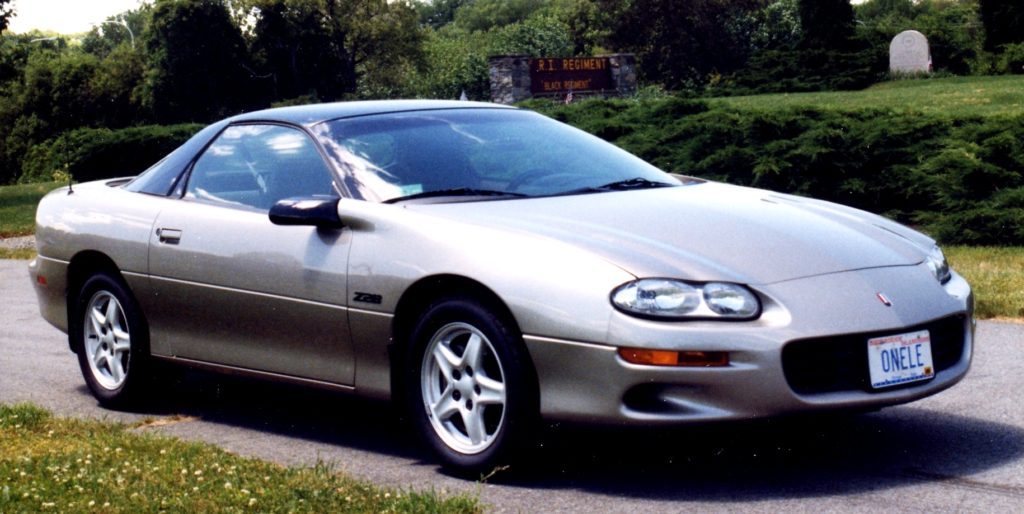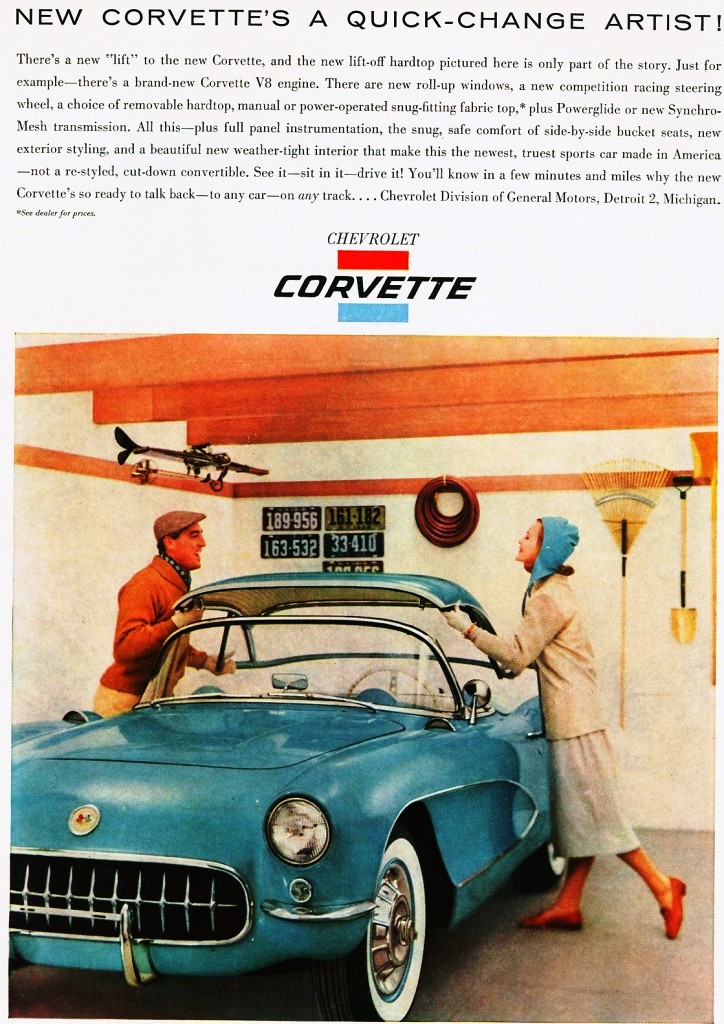(Author note: We received this communication from mechanical design engineer Robert J. Angeli, creator/owner of two registered US patents with a third pending and currently employed in the field of underwater vehicle development. He describes himself as “old school” in terms of his values, and enjoys animals, classic rock music and weight lifting. We’re happy he responded to my recent column on Chevy High Performance and the 265 small block that debuted back in 1955 as Chevrolet’s first overhead valve V8.)
Q: Hi Greg and I enjoyed your recent article on Chevy High Performance and the first 265 V8 engine. The old “gross” horsepower ratings used back then really threw a wrench into the entire horsepower and torque database. Today many professional automotive journalists still compare gross and net figures as though they’re the same. Before I get into that, here’s some info on the cars in my family through the years and my personal favorites.

My dad purchased three new, special order Fords in the 1950s. He always bought the smallest and lightest models and specified every “heavy duty” option. The first was a 1955 that included the 193 HP 292 4-barrel. A 1955 “Power Pack” 265 Chevy dusted him, which was apparently production line stock. I don’t know which “Power Pack” that was, though it probably wasn’t the rare and most powerful “225 HP” version.
That event prompted my father to fit his 1955 Ford with a McCulloch Supercharger. Whatever the 1955 Chevy Power Packs were or weren’t, they were most certainly more powerful than Ford’s counterparts. My dad replaced the ’55 Ford with a ’57 model and it was equipped with the “245 HP” 312 V8 4-barrel. Surprisingly, my dad stated that the stock 1957 with the 4-barrel was faster than the 1955 Ford with the supercharger!
He finally replaced the ’57 with a ’59 Ford, which was equipped with the then new “300 HP” 352 4-barrel. He said it was a real dog, though the installation of an Iskenderian cam and kit apparently transformed the engine. To the best of my knowledge, no personal Chevy vs. Ford events occurred with the ’57 or 59 Fords.

The ’59 was replaced with a new, special order 1964 Buick Wildcat two-door. My parents took delivery of it just a month or so prior to my birth. Finally, I recall my grandfather taking delivery of his then new 1969 Chevy Impala. While he wasn’t really a “car guy,” my dad somehow convinced him to order it with the optional “300 HP” 350 (base Corvette engine), Turbo 350 automatic transmission, 12 bolt limited slip rear and F41 handling package. That was the car that warmed my heart to the Chevrolet brand and I still miss it.
My personal favorite was my special order 1999 Z28 Camaro 1LE, which turns out to be just one of 66 examples equipped with the 6-speed manual (including SS and Z28 1LE cars). Modifications include Kenny Brown sub frame connectors, JBA “shorty” headers, a B&M “Ripper” Shifter; custom fabricated cold air intake system and a Recaro seat (driver side only).

The factory 1LE package included $1,800 worth of Koni “Yellow” double adjustable shocks, 1LE specific suspension bushings, high rate springs, strengthened rear control arms, a larger rear anti-roll bar and a power steering cooler. It was a wonderful handling car in its day, capable of running high 12 second/109 MPH quarter miles and topping 28 MPG on the highway (with the AC on) at sustained speeds in the 70 MPH range. The car would get rubber in first, second and third on bone dry pavement.
I paid $21,400 for it brand new. This was unquestionably one of the best American performance car values of all time when adjusted for inflation.
As for those horsepower ratings, and the use of “conservatively” rated in your column on the 265 V8, I agree that many times you see the term “under-rated,” and such is the world of muscle car myth. The “under-rated” term has become so common that many people understandably believe it.
I’ve been published in many magazines with perhaps half my letters addressing this specific topic. My most recent letter was printed in “Hemmings Muscle Machines” just a couple of months ago. So to explain, I use Patrick Hale’s formula that provide a good approximation of actual peak engine horsepower when race weight (curb weight + driver) and quarter mile trap speed is known. Unlike ET, trap speeds remain relatively unaffected by variables such as traction and gearing.
The formula: Approximate peak engine HP = (Trap Speed/234)^3 * Race Weight.
Turns out I had a road test of a 1956 Corvette in my archives with the “225 HP” variant. Curb Weight was a feathery 2,980 pounds, with a reported test weight (included the driver) of 3,250 pounds. Trap speed was 91 MPH (fast by 1955 – 1956 standards) and using Hale’s formula here’s the result:

(91 MPH/234)^3 * 3,250 pounds = 191 Horsepower. That’s actually not far off from the gross rating, which is quite rare for the period.
However, the assumption here is that the car in question was representative of an actual production line stock example, as opposed to a specially prepared press/media car. The latter case was quite common back then, so we’ll never know what the actual condition of that Corvette though we can be virtually sure that it made appreciably less than 225 HP.
The article in the link below remains the most interesting auto magazine piece I’ve ever read. Even if you’re not a MOPAR fan, I think you’ll find it quite interesting. The author addresses the lengths that American car companies went through in preparing performance cars for magazine tests back in the day.
The original 440 six-pack test from “Super Stock” Magazine: https://sixpacksixbbl.homestead.com/a12roadtestspage10.html.
The same writer, Ro McGonegal, published the article above some 25 years later (https://sixpacksixbbl.homestead.com/a12roadtestspage11.html).
Nice chatting with you, Greg and hope this helps when discussing actual horsepower. Sincerely, Bob Angeli, Portsmouth, Rhode Island.
A: Thanks much Bob for all your information, memories, links and insights. It is much appreciated.
(Greg Zyla is a syndicated auto columnist who welcomes reader questions and comments on collector cars, auto nostalgia and high performance at greg@gregzyla.com).



Be the first to comment on "Collector Car Corner – Noted mechanical engineer shares muscle cars, horsepower ratings, and family car memories"